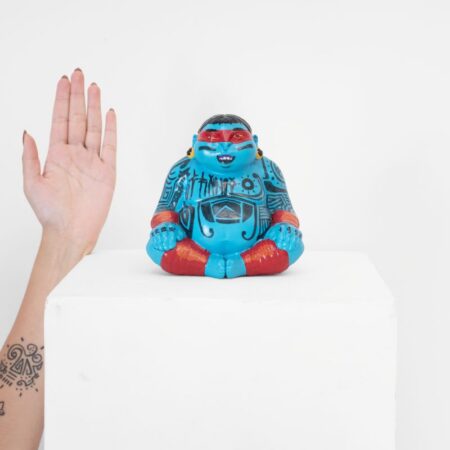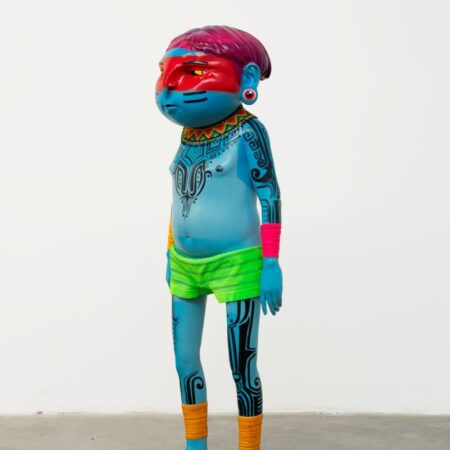Fábio de Oliveira Parnaíba, known as Cranio, was born in 1982 in the north of São Paulo and began his graffiti career in 1998. His work is characterised by a recurring blue character, inserted in various situations that portray contemporary social and environmental issues. The character symbolises the tensions and contradictions of urban Brazil, inviting reflection on issues such as consumption, inequality, pollution and the dynamics of life in big cities.
Cranio builds his visual narratives from inspirations that include Salvador Dalí’s surrealism, pop culture and animations. These references provide a creative critique of the challenges of modern capitalism and the pressures faced by the individual in contemporary society. The ever-changing blue character symbolises a world where the exploitation of resources and the difficulties of adapting between tradition and modernity are constant.
Cranio’s career has led him to exhibit in various parts of the world, moving between city walls and gallery spaces, always focusing on social criticism and the dialogue between art and society.
Fábio de Oliveira Parnaíba, known as Cranio, was born in 1982 in the north of São Paulo and began his graffiti career in 1998. His work is characterised by a recurring blue character, inserted in various situations that portray contemporary social and environmental issues. The character symbolises the tensions and contradictions of urban Brazil, inviting reflection on issues such as consumption, inequality, pollution and the dynamics of life in big cities.
Cranio builds his visual narratives from inspirations that include Salvador Dalí’s surrealism, pop culture and animations. These references provide a creative critique of the challenges of modern capitalism and the pressures faced by the individual in contemporary society. The ever-changing blue character symbolises a world where the exploitation of resources and the difficulties of adapting between tradition and modernity are constant.
Cranio’s career has led him to exhibit in various parts of the world, moving between city walls and gallery spaces, always focusing on social criticism and the dialogue between art and society.








